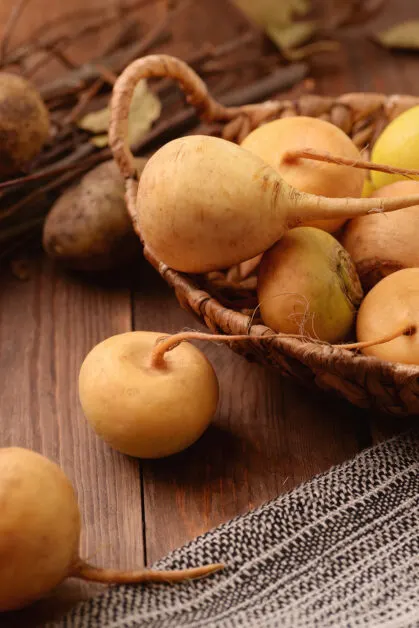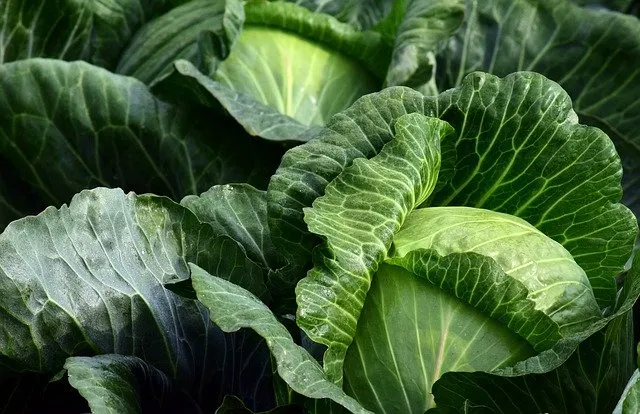Some of the links in this post are affiliate links. This means if you click on the link and purchase the item, we will receive an affiliate commission from the vendor at no extra cost to you. These business relationships allow us to keep bringing you great EatMoveHack content. All opinions remain our own.
So, you’re done with feeling sluggish and bloated, and want to ditch convenience food and transform your diet? But if you’re on a budget, you might be thinking: “I can’t afford to eat healthily”. It’s a common misconception that you need deep pockets to buy nutritious food, when in fact your budget shouldn’t be a barrier to you eating a healthy diet. With a little bit of planning and a lot less waste, you can bet your bottom dollar, you can eat well for less. Follow our easy diet hacks and you’ll find eating healthy on a budget easy as (a veggie-packed) pie.
1.Super-Easy Diet Hack: Plan Your Meals
Check your pantry, fridge, and freezer and draw up a weekly meal plan that uses up the ingredients you already have. Write a shopping list for the missing items and when you hit the supermarket, stick to your list! No matter how tempting it is, don’t veer into the unhealthy snack aisle. It’s an added cost for empty calories you don’t need.
2. Never Shop When You’re Hungry
If you shop when you’re hungry, you’re likely to spend more and be driven by cravings, leading you away from the healthy food and to the high-fat and sugary snacks.
Generally speaking, stick to the outer perimeter of the store as that’s where you’ll find the whole foods on your list. You’ll fill your cart with them first, helping prevent the impulse buys that are so hard to resist when your stomach is rumbling.
3. Shop During the ‘Happy Hour’
In most supermarkets, you’re likely to find discounted fresh items towards the end of the day. Hit the “reduced to clear” shelves at the right time and you can save big on healthy foods. Just be sure to check the use-by dates and freeze anything that you’re not going to eat before it passes.
The discount shelf may also have processed food, microwave meals, and desserts at heavily reduced prices. So don’t let the cheap prices and convenience draw you away from your shopping list and healthy eating plan.
4. Get a Loyalty Card
Most grocery stores now have loyalty or rewards cards, where you can build up points every time you shop that can be exchanged for vouchers, coupons, or free groceries.
Your reward offer may give you access to exclusive deals and offers. Just be careful with special discounts, such as BOGOF deals. They appear to offer good value, but only take advantage of these deals if they are items on your shopping list that you intend to use. Tinned goods, frozen veg, and pulses are good examples, bags of chips, microwave meals, and other convenience foods are not.
5. Effortless Budget Diet Hack: Go Generic
Most grocery stores have generic brands for almost every product. We’ve found that there’s rarely a compromise on quality or taste with generic brands, but there are significant savings. Just remember to check the ingredient list to make sure there are no unexpected ingredients or allergens.
6. Cut Down on Luxuries
We aren’t saying you should stop buying yourself a few treats now and then. However, if saving money and eating healthy is the priority, you should trim down on non-essential items, like snack bars, biscuits, cakes, and fizzy drinks.
Many of these ‘luxuries’ are high in fat, salt, and sugar, so as well as being hard on your budget, they can be hard on the waistline too. Instead, consider healthier alternatives, such as sparkling water with a lime wedge, or apple and whole-nut peanut butter.
7. No Processed Foods
Highly processed foods – like soda, ready meals, cookies, crackers, and chips – are heavy on your budget, and light when it comes to beneficial nutrients. Cut out the processed foods, and you can use more of your budget on healthy, nutrient-rich foods.
Plus, foods tend to be more affordable in a less processed form. For example, ready grated cheese is more expensive than buying a block of cheese and the grated version usually also has added ingredients like potato starch and preservatives, and whole fruits and vegetables are way cheaper than ones sold already peeled and sliced. Whole foods are often sold in larger quantities, yielding more servings, giving you more bang for your buck.
8. Don’t Be Fooled By Fake Health Foods
Don’t waste any of your food budget on ‘fake’ health foods that you think are better choices than the sugary snacks you usually buy. Food labeling is often deceptive, making a product look nutritious, when it actually contains just as many additives, sugars, and hydrogenated fats as your usual snacks.
Fake health foods to avoid include: dried fruit, vegetable chips, smoothies, instant oatmeal, granola, and flavored low-fat yogurts that are high in sugar. When choosing healthy snacks, check the labels for added sugar and sodium and steer clear of anything with too many artificial additives.
9. Buy Cheaper Cuts of Meat & Inexpensive Produce
Fresh fish and meat can be expensive, but there are cuts of meat that are pretty cheap, such as whole chicken, ground beef or poultry, and chuck steak. There’s no sacrifice on taste and they work great in casseroles, stews, soups, and stir-fries.
Produce that’s in season is usually cheaper than out-of-season fruits and vegetables. Plus they’re usually at their best in terms of nutrients and flavor. Finally, out-of-season produce has usually been transported a long way, which is bad for your budget and not great for the environment either.
Another tip for eating well for less is buying loose produce as opposed to pre-packed. Take some extra time in the fruit and veg aisles and check the price per pound. In many cases, loose produce is cheaper than pre-packed, and it comes with the added benefit of you only buying what you need. Better on waste and your pocket.
10. Back to Basics Diet Hack: Good Ol’ Home Cooking
One of the most effective diet hacks for saving money and for eating healthy is cooking your meals from scratch. The overall cost is cheaper compared to microwave meals and takeaways, which are often packed with salt, preservatives, and unhealthy fats. With home cooking, you have the benefit of controlling exactly what goes into your meals.
11. Cook with Pulses
Pulses, such as peas, lentils, and beans, are some of the cheapest foods you can buy in terms of cost per portion. They’re low in fat and calories but packed with fiber, vitamins, and minerals. Use them as an alternative to meat protein, such as replacing chicken in a curry with chickpeas, or diced beef with lentils and barley for a hearty stew.
12. Canned Foods are Fine
You might be surprised to learn that plenty of canned foods are just as nutritious as their fresh counterparts. For example, canned salmon and tuna are cheap alternatives for fresh fish that are still packed with nutrients. Plus, they have the added convenience of being already cooked.
Other great healthy canned food choices include reduced-sodium broths, tomato, corn, peas, and beans as long as you rinse them before use to reduce about 40% of the salt. Also, avoid canned fruits and vegetables that are packed in syrup or brine, as they are not as nutritious as those packed in their own juice or water.
13. Research Cheap Recipes
Budget food doesn’t have to mean less tasty food. The internet is an excellent resource for finding cheap recipes and meals that utilize leftover ingredients. Whether you’re vegan, vegetarian, or looking to maintain a keto diet on a budget, there will be recipes suitable for you.
14. Start Batch Cooking
If you don’t have time for cooking from scratch every day, batch cooking is the perfect solution. Cook large portions of your favorite healthy recipes so you can eat some now and save some for later.
Freeze in individual portions ready for a cheap and healthy meal whenever you need one. Always having leftovers on hand is great when you’re trying to eat healthy on a budget as it reduces the temptation for eating out or bringing home a pizza on extra busy days.
15.Green Cheap Diet Hack: Bulk Up Meals with Low-Cost Vegetables

Meat and fish are usually the most expensive ingredients on your shopping list, so why not bulk up your meals with low-cost vegetables? Root vegetables like carrot, turnip, and swede, are great for making your meat go further in a stew or for dicing into small cubes for hearty soups. It keeps costs down while packing more veg into your diet.
You could also have a few vegetarian days a week. How about a meat-free Monday or fish-free Friday? There are so many delicious meat-free alternatives to your favorite recipes. We love bean chili, and canned pumpkin makes the most delicious pasta sauce.
16. Eat Smaller Portions
The larger the portion size, the higher the cost per portion. If you’re often scraping food into the garbage after meals, try eating smaller portions by measuring out the ingredients for your meals. It’s a diet hack that’s kind to your wallet and your waistline.
17. Get Freezing
Your freezer is a powerhouse for budget-friendly, healthy eating. Frozen fruits like berries, tropical mixes, and veggies like edamame and sweetcorn are often cheaper and just as—if not more—nutritious than fresh produce, as they’re frozen at peak ripeness.
Freezing unused food is also a great way to reduce waste. Store chicken and turkey for up to 9 months, ground beef for 4 months, and steaks or chops for 12 months. Use airtight containers or heavy-duty freezer bags to avoid freezer burn.
With a well-stocked freezer, saving money and eating well is a breeze!
18. Grow Your Own

You don’t need to have the greenest of green fingers to grow your own produce at home. You could start with a simple herb garden as many herbs are easy and cheap to grow from seeds. Not only do you have fresh ingredients to add a burst of flavor to your budget-friendly dishes, but you also have a constant supply with no added cost.
With some extra time and effort, you could graduate to growing your own fruit and vegetables. Tomatoes, strawberries, onions, and potatoes are relatively easy to grow in your garden and they can be picked at their optimum freshness.
If you don’t have any outside space, research to see if there are any community gardens you can join in your area.
19. Brown Bag It
Eating out for lunch is not just expensive, but it’s also harder to stick to healthy options. It only takes a few minutes in the morning to prepare a healthy lunch and it keeps you away from the high-calorie snack options available in vending machines. Once you have got into the routine of preparing your own lunch and start seeing the savings you’re making, you’ll wonder why you did it any other way.
20. Shop Online
Maximize your food budget by using comparison websites to check the cost of a basket of groceries across multiple stores. With just a few minutes of research, you can find the cheapest supplier and save significantly.
Shopping online offers even more advantages. You can easily track your spending, avoid impulse buys, and enjoy the convenience of home delivery. Many stores also offer exclusive discounts and deals for online shoppers, helping you save even more on your healthy grocery haul.
A little planning can go a long way toward stretching your budget while keeping your kitchen stocked with nutritious options!
Conclusion
With a little planning, you can enjoy nutritious meals without overspending. Opt for cheaper cuts of meat, explore cost-effective protein alternatives like beans or lentils, and make the most of your freezer to store leftovers or bulk buys.
Smart shopping is key. Stick to a list, avoid processed foods, and steer clear of impulse purchases. Planning meals ahead and shopping on a full stomach will help you stay on track with both your budget and your healthy eating goals.
Healthy eating doesn’t have to be expensive—it just takes a little strategy!
If you want to learn more about eating healthy, check out:
The Best Vegetables for Breakfast
Lean Body Hacks – The Complete Food Edition Guide

